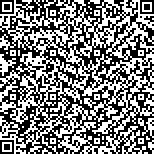| 摘要: |
| 为探讨大菱鲆(Scophthalmus maximus)大规格幼鱼热耐受性和热应激过程中敏感指标的变化,本研究设定18℃、21℃、24℃和27 4℃个温度梯度,采用1℃/h的升温速率,对驯化温度为18±1℃的苗种进行96 h急性胁迫实验,统计各温度组96 h成活率和测定血浆部分生化指标的变化情况。结果表明,在pH 7.85、盐度29.5和溶解氧高于6.5 mg/L的环境条件下,平均体质量183.65±15.99 g的大菱鲆幼鱼96 h高起始致死温度(UILT50)为28.05;℃温度和胁迫时间对血浆肾上腺素(EPI)、皮质醇(Cortisol)、血糖(GLU)、还原型谷胱甘肽(GSH)、超氧化物歧化酶(SOD)和碱性磷酸酶(AKP)含量/活性都存在显著影响,除GSH外,温度和胁迫时间存在显著的交互影响作用;热应激组血浆EPI含量随胁迫时间延长呈逐渐上升趋势,同一胁迫时间以21℃组含量最高;热应激组Cortisol含量的响应时间随温度升高相应提前、随胁迫时间呈先升后降的趋势,均在48 h达最高值;24℃和27℃组GLU含量随胁迫时间呈先升后降趋势,胁迫3 h~6 h即达最高值,上升幅度与温度正相关,21℃组则呈逐渐升高的趋势;热应激组GSH含量和SOD活性仅在胁迫初期(0 h~3 h)与对照组存在显著差异;热应激组AKP活性处理12 h显著低于对照组,48 h后则显著高于对照组,且升高幅度与温度呈正相关。 |
| 关键词: 大菱鲆(Scophthalmus maximus) 热应激 血液生化指标 |
| DOI:10.11759/hykx20190814001 |
| 分类号:S949 |
| 基金项目:中国水产科学研究院中央级公益性科研院所基本科研业务费专项资金(2016HY-ZD1402);山东省重大科技创新工程项目(2018YFJH0703和2018SDKJ0303) |
|
| Effect of acute heat stress on plasma biochemical indexes in turbot Scophthalmus maximus |
|
MENG Zhen1, ZHANG Hong-li2, LIU Xin-fu1, JIA Yu-dong1, LIU Bin1, QU Jiang-bo3
|
|
1.Laboratory for Marine Fisheries Science and Food Production Processes, Yellow Sea Fisheries Research Institute, Chinese Academy of Fishery Sciences, Qingdao 266071, China;2.Research Center for Harmful Algal and Marine Biology of Jinan University, Guangzhou 510632, China;3.Tianyuan Aquaculture Co., Ltd. of Yantai Economic Development Zone, Yantai 264006, China
|
| Abstract: |
| In order to investigate heat tolerance and sensitive plasma biochemical indexes in large juvenile turbot Scophthalmus maximus during heat stress. Acute heat stress of was applied to juveniles for 96h (average body weight 183.65±15.99g) acclimated to 18±1℃, and 4 temperature grad ients of 18℃, 21℃, 24℃, and 27℃ were set using a heating rate of 1℃/h. The survival rate and ch anges in plasma biochemical indexes were measured. The results showed that under the environmental conditions of pH 7.85, salinity 29.5, and dissolved oxygen>6.5 mg/L, the 96h high initial lethal temperature (UILT50) of turbot was 28.05℃. The plasma content or activities of epinep hrine (EPI), cortisol, blood glucose (GLU), reduced glutathione (GSH), superoxide dismutase (SOD), and alkaline phosphatase (AKP) were significantly affected by the water temperature and stress exposure time. Moreover, there were significant interaction effects between water temperature and stress exposure time on these indexes, in addition to GSH. The plasma EPI in the heat stress groups gradually increased with the prolonged stress time and was always highest in the 21℃ group. The cortisol activity in the heat stress groups was increased concordantly with increasing water temperature, and the trend first increased and then decreased with the prolonged stress exposure time, reaching its highest value at 48h. The GLU content in the 24℃ and 27℃ groups increased and then decreased with the prolonged exposure time, reaching its highest value at 3 h-6 h. The GLU activity in the 21℃ group showed a gradual increase. There were significant differences between the control and heat stress groups in the GSH content and SOD activities only at the initial stress stage (0-3 h). AKP activity in the heat stress group was significantly lower than that in the control group at 12h. It was significantly higher after 48h of stress, and the increase in amplitude was positively correlated with the water temperature. Relevant studies can provide a theoretical basis for the management of turbot cultures, breeding of high-temperature resistant varieties, and anti-heat stress technology. Plasma cortisol, GLU, and AKP content/activity can be used as sensitive indicators of heat stress in turbots. |
| Key words: Scophthalmus maximus heat stress plasma biochemical indexes |
